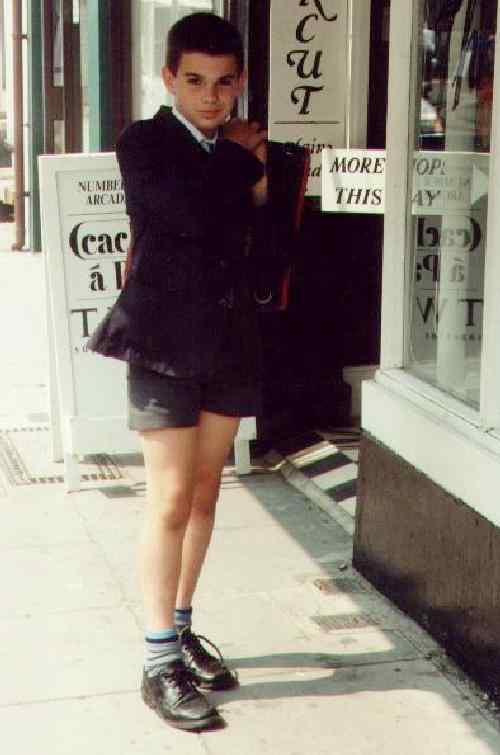
Figure 1.--Many English boys by the end of an active school day returned home with their kneesocks down to their ankles. |

|
Garters were needed to keep the socks up. Some boys would wear kneesocks with visible colored flashes. Boys being boys, some sometimes neglected to keep their socks up. This was a phenomeon picked up on inboth the William and Jennings series. The constant reprimands by teachers gave rise to the expression, 'Pull your socks up' for 'improve', and this could lead to jokes by taking the expression literally. Socks falling down was a great problem in the 1910s and 20s. It was a special problem with home knotted soicks. During the 1930s 'Lastex' yarn had been introduced in an attempt to make the socks self-supporting; but it did not stand up well to repeated washing and garters were still usually necessary. Schools varied as to how strict they were concerning boys keeping their kneesocks up. Some schools were quite strict.
Garters were the only way to be sure ykneesocks were kept up. One English reader reports, "When I was at school in the 1960s, we all wore shorts up to the age of 13 and most boys had elastic garters to keep our socks up. The garters would leave a visible inprint on your legs."
Some boys would wear kneesocks with visible colored flashes. This was, however, not common. The tab or flashed were often worn with the Cub uniform, but wer not common with scool uniforms. The Cub flashes ere nrmally green. School would use different colors.
Boys being boys, some sometimes neglected to keep their socks up. William was of course always pictures with one sock down. Boys always had their kneesocks slipping down to the ankles. Jennings' 'socks were hanging concertina-fashion about his ankles' (Anthony Buckeridge, Jennings' Diary London and Glasgow, 1953, 60), a theme which appears also in other Jennings books.
The constant reprimands by teachers gave rise to the expression, 'Pull your socks up'. The term entered the English language meaning to 'improve' or 'get down to work'. This could lead to jokes by taking the expression literally, as in another of the Jennings stories: '"That means you've got just twenty-four hours to pull your socks up",' says Mr Carter, and then has to add: '"No, no, you silly little boy - I didn't mean it literally. Leave your socks alone when I'm talking to you"' (Anthony Buckeridge, Jennings' Little Hut, London and Glasgow, 1951, 197). The same misunderstanding occurs in Jack Rosenthal's television play P'tang, Yang, Kipperbang, written many years later but set in 1948 (available in story form in Jack Rosenthal, ed., First Love, London, 1984, 32-3). A HBC reader has provides an over view of the expression and keeping up kneesocks.
Socks falling down was a great problem in the 1910s and 20s. It was a special problem with home knitted socks. During the 1930s 'Lastex' yarn had been introduced in an attempt to make the socks self-supporting; but it did not stand up well to repeated washing and garters were still usually necessary. This was something of a boon to schoolboys, if not to their teachers, since garters had an alternative use - as catapults, as in one of the most good humoured of preparatory school stories ('Klaxon' [that is, John Graham Bower and Barbara Bower], Aloysius Let Loose, London, 1950,100). Alternatively, the garters - preferably first dipped in water - could be 'pinged' at other boys, as in a crime novel by Josephine Bell (Death at Half-Term, London, 1939, re-issued London, 1987, 120, 121). Nowadays the sock-tops usually incorporate elastic to make them self-supporting. This is, however, not a perfect sollution as this yarn gradually looses its elasticity.
Schools varied as to how strict they were concerning boys keeping their kneesocks up. Some schools were very strict in insisting that boys keep their socks up. Usually falling socks only resulted in a curt rejoiner "Pull up those socks, boy." (For some reason this does not seem to have been such a problem with girls. One reader tells us, "When i was reading your pages on keeping up knee socks, it reminded me of my own school days. I attended a primary school during the 1970s. well our teachers at our school had a way with us boys they use to have use a ruler on the backs of our legs. Oh how it stung like mad, but that kept them up alright and you didn't forget." Some boys had even more unpleasant experiences. We note one account, "A boy in our class had his
socks down for a school photo. No one noticed at the time the picture was
taken. However when the photo's came back his teacher was most annoyed. In
fact he felt that the boy had let the whole class down. So the boy was given
six stokes of the cane in front of the class and had to report for uniform
expection every morning for the rest of the term. This was during the 1960s in
England."
A Swedish reader remembers his school expeiences at an English prep school in 1949. Te school was very strict about the boys keeping their sicks pulled up.
Navigate the Boys' Historical Clothing Web Site:
[Introduction]
[Activities]
[Biographies]
[Chronology]
[Clothing styles]
[Countries]
[Bibliographies]
[Contributions]
[FAQs]
[Glossary]
[Satellite sites]
[Tools]
[Boys' Clothing Home]
